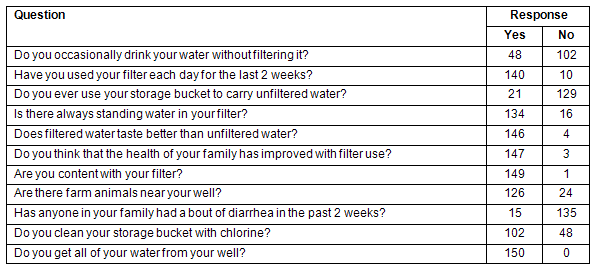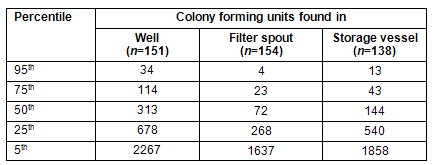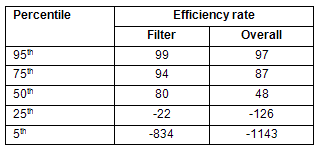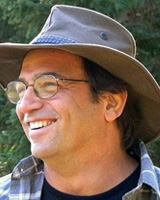Introduction
The World Health Organization estimates that one billion people worldwide lack safe drinking water and that 1.6 million people, mostly young children, die yearly from related diarrheal illnesses. The majority of this disease burden falls on developing countries, especially on urban fringes, in remote farming villages and Indigenous communities1. Several technologies have been developed and deployed in communities without access to safe public drinking water to treat water in the home. The most well studied methods of point-of-use (POU) sterilization include chlorination with safe storage, combined coagulant-chlorine disinfection systems, ultraviolet radiation through clear plastic container (SODIS), ceramic filtration and biosand filtration2. Controversy exists regarding which of these technologies is superior, with some experts believing that solutions should vary between communities based on environmental and cultural and social considerations3.
Characteristics of a practical and effective POU technology include: (i) the ability to produce sufficient quantities of microbiologically safe drinking water in a reasonably short period of time; (ii) the ability to treat water from different sources that may have high turbidity and organic content; (iii) low cost to implement, operate and replace and; (iv) it maintains effective and high post-implementation use levels after deployment in the field2.
Background
Since they were first installed in Nicaragua in 1996 approximately 80 000 biosand filters (BSFs) have been put in use into use in 20 countries world-wide. A detailed description of the BSF can be found elsewhere4. In brief, these filters clean water by a combination of straining, adsorption and biological activity of the so called 'schmutzdecke', an accumulation of organic and inorganic charged compounds created on the sand column5. Log10 reductions of 0.5-4.0 for bacteria, virus and protozoa in filtered water have been reported6, with filter performance varying with maturity, dosing conditions, flow rate, pause time between doses, grain size, filter bed contact time and other design and operation factors7. Filter performance is most commonly monitored by reductions in colony forming units (CFUs) of Escherichia coli, an indicator organism.
This BSF project was primarily funded by the Newton San Juan del Sur Sister City Project (http://www.newtonsanjuan.org) and the Conservation Food and Health Foundation as a component of a parasite eradication program. The BSFs were manufactured locally of concrete and filled with 'virgin' sand from the Montastepe volcano. The sand was hand sifted, washed and chlorine sterilized according to procedures recommended by the Centre for Affordable Water and Sanitation Technology (http://www.cawst.org/en/resources/pubs/category/12-biosand-filter-project-implementation).
Manufacturing costs were US$60 per filter exclusive of delivery to the homes. A pilot project in 2007 introduced 21 BSFs in the Papaturro community of Nicaragua. The program was expanded by an additional 220 filters in 2008 and 360 filters in 2009. Filters were made available to families on an ad-hoc basis. The only requirements were that the households were located close enough to a dirt road to allow filter delivery on a flat bed truck. Recipient families did not pay for the filters and were not required to contribute effort in the production of the filters. Household members were required to sign a document stating that they would adhere to recommended filter use practices that were taught to them by the Newton Sister City Staff. A support team of brigadistas made occasional visits to households to reinforce filter best practices.
In August 2008 the authors conducted a preliminary visit to the communities studied in this report to pilot the methods and procedures. Poor performance by a small nonrandom sample of BSFs studied in this feasibility demonstration project resulted in a request for a more detailed assessment of BSF performance by one of the funding sources (Newton Sister City Project). This study was conducted in July and August 2009 in response to that request.
This filter performance project was conducted by individuals who were independent of the funding sources and manufacturers of the filters. The goal of the project was to conduct an independent assessment of the performance of the filters in use in the communities. Emphasis was thus placed on laboratory measurement of filter performance. The cost of this study was approximately US$10,000 and covered housing, food, transportation (exclusive of airfare to Nicaragua) and laboratory expenses. This project was funded by both private donations and a grant from the University of Michigan.
Setting
All filters studied were in surrounding villages of San Juan del Sur, Rivas Department, Nicaragua. Most households were small farms with limited animal husbandry consisting primarily of cattle and pigs. Water for virtually all of the homes came from wells that were approximately 6-9 m (20-30 feet) deep. Generally, wells were not intentionally situated in areas that protected them from animal or human waste. Homes were typically two or three rooms with dirt floors and no plumbing. Virtually every home had its own well although some sharing was apparent. Testing was done in July and August, months in the early wet season. Samples were taken from homes in the following communities: El Toro, Venado, Saragosa, Barbudos, Pueblo Nuevo, La Rejega, Carrizal, Bernardino, La Cuesta, Nevada, El Oro, Collado and Ojochal (filters for the last two communities were funded independently of the Newton Sister City Project).
Methods
This evaluation was conducted with the approval of the Institutional Review Board of the University of Michigan. Verbal informed consent was obtained. Confidentiality is preserved by anonymous reporting of results.
Personnel
The study team consisted of two North American volunteers who were on-site for the entire study period and provided training for supplemental volunteers who worked for periods of 2 weeks each. A local translator and driver were hired for US$50 weekly. Questionnaires were administered in Spanish by the translator or a bilingual volunteer when available.
Statistical analysis
This study was conducted on a convenience sample of 199 homes from 13 communities. These communities were selected by the translator and driver based on familiarity with the region and BSF project. Selection of homes in each community was not random but rather a generally successful attempt was made to visit all homes in each community that had received a filter. Of the 199 homes visited, laboratory data is presented on the 154 where the BSFs were reported to be in use by household members. Descriptive statistics are used to demonstrate bacterial contamination of water at the source, the filter spout and in the storage bucket.
Household visits
The communities visited were within a 90 min driving radius of the town of San Juan del Sur on the Pacific coast of southern Nicaragua. Homes with filters were identified by memory (driver and translator) and by questioning community members. Based on availability and willingness brigadistas accompanied the study team on some visits. One unannounced visit was made to each home. The daily routine was to arrive at a village in the early morning and visit approximately 12 homes prior to returning to San Juan del Sur by mid-afternoon to begin laboratory work. The team worked Monday to Friday collecting and analyzing samples.
In addition to the paid translator and driver, the study team consisted of at least two volunteers who collected water samples and recorded responses to the questionnaire. Visits were generally conducted in 15 to 30 min. Occupants of virtually all households (150/154) responded to the questionnaire and allowed for filter inspection and for water samples to be taken. The questionnaire (Table 1) consisted of 11 questions with yes/no responses.
Water samples were obtained from three sources for each home. First a sample was taken from the drawing bucket of each family's well. This bucket of water was then poured into the BSF and a second sample was obtained from the filter spout after approximately 1 min of flow. A final sample was taken from the storage bucket of the household (if available). Filter flow rates, water turbidity and Ph were not measured. All samples were collected into standard 100 mL 'Whirl-Pak' sample bags (NASCO; Atkinson, WI, USA) and placed in a cooler on ice. All samples were filtered and plated the evening of collection day and read in 24 hours.
Table 1: Questionnaire response data

Water analysis
A laboratory area consisting of a work bench, cabinets, sink, refrigerator and writing space was established in the kitchen and dining area of the volunteer's rented apartment. All laboratory supplies were purchased in the USA and transported to Nicaragua.
Briefly, 100 mL samples of water were vacuum filtered through 0.45 µ Millipore membranes using an electric vacuum pump. Membranes were then placed on Bio-Rad Rapid'E. coli 2 Agar (http://www.rapidmicrobiology.com/news/1027h13.php) and placed in a portable incubator for 24 hours. The culture medium was prepared weekly according to the manufactures recommendations and stored in a refrigerator. The filter apparatus and flasks were alcohol sterilized between samples. Testing confirmed that this method led to effective sterilization and did not interfere with recovery of organisms from the subsequent filtration. The E. coli colonies were identified by their characteristic purple colony color on this medium.
Colony counts were performed in duplicate by different observers and averaged. Counts were repeated and consensus reached if there was more than 15% disagreement. Results were recorded as CFUs per 100 mL water.
The membrane filtration laboratory procedures followed US EPA standard 16038. Quality assurance was assessed by performing 10% of experiments in duplicate and including 'blanks' of sterile water daily. To assure consistency, one author (MF) was present and participated in all water sample collection and laboratory work. All sets of samples (well, filter spout, storage bucket) were analyzed at the same time using the same batch of culture medium. Results were entered into a Microsoft Excel spreadsheet.
Questionnaires
The questionnaire was administered by the translator (or bilingual volunteer when present) to the person who was primarily responsible for using and maintaining the filter. This was typically the female head of household. When this person was not available questions were answered by any household member willing to do so. Results were collected directly onto the questionnaire form and then entered into an Excel spreadsheet.
Results
Laboratory
The BSFs were in use in 154 of the 199 households visited (77%). Filters had been in use for approximately 12 months on average. Sixteen of the 154 filters that were said to be in use by household members had moist sand but with no standing water in them. Remaining filters had approximately 5 cm of water above the level of the sand. No attempt was made to enter the homes and inspect the filters of the 45 families who claimed to have discontinued their use. Water samples were obtained and tested only in the 154 households where the BSFs were in use at the time of the visit. Laboratory and collection accidents resulted in loss of 3 well-water samples. Sixteen of the 154 households did not have storage buckets from which to obtain and test water. Complete sets (well, filter spout and storage vessel water) were thus available for 88% of households tested.
The number of CFUs of E. coli per 100 mL of water obtained at the source (well), filter spout and storage bucket is shown (Table 2). Water from all wells contained in excess of 10 CFUs of E. coli per 100 mL. The filter efficiency (percent reduction of E. coli ) was calculated (Formula 1):

[1]
Similarly, the overall process efficiency (percent reduction) in E. coli , reflecting the improvement in water purity from source to storage vessel, was calculated (Formula 2):

[2]
Results are shown (Table 3). Colony forming units per 100 mL in sterile blanks ranged from 0 to 2 and the coefficient of variation for repeated experiments was 6.5%.
Although biosand filtration reduced CFUs in 74% of households in which it was used, in only 5 cases (3%) did filtered water have no detectable E coli CFUs, the stringent target level of purity recommended by the WHO. In 26 cases (17%) CFUs were reduced to levels <10 CFUs/100 mL. The medium filter efficiency was 80% and the overall program efficiency was 48%, indicating frequent recontamination of filtered water in storage vessels. Colony counts of less than 10 per 100 mL were found in only 3 of 135 storage vessels (2%) tested. Recalculation of filter efficacy rates excluding16 filters without standing water had little effect on the overall filter efficacy rates (data not shown).
Table 2: Colony forming units of Escherichia coli per 100 mL found in well, filter spout and storage vessel water

Table 3: Filter and overall efficiency rates

Questionnaire
The primary source of water for all households was a well, the majority of which (84%) were in the immediate vicinity of farm animals. Virtually all subjects interviewed stated that they were pleased with their BSF, that they used it every day, that it improved the taste of their water and resulted in improved family health. Approximately one-third of respondents reported occasional consumption of unfiltered water and a similar proportion did not sterilize their storage vessel with chlorine. Ten percent of households reported that at least one member of their family had had a diarrheal episode in the last 2 weeks. Data was also collected on the frequency of visits by brigadistas to reinforce filter best practices with 71% of the 154 households reporting that they had been visited by a brigadista (program staff) within 3 months of the unannounced study visit.
Discussion
After an average of 12 months of use, 45 of 199 households (23%) visited stated that they were no longer using their BSFs. Reasons cited for not using filters included: no access to replacement sand (n = 18), broken filter or missing parts (9), infestation with ants (5), poor tasting water (3), apathy (4), and reason not given (6). Among these 45 households, 60% cited no or insufficient contact with brigadistas as contributing to their lack of use of the BSF. The finding that 23% of households were no longer using their filters after 1 year is consistent with findings reported in the literature3. In a study of ceramic water filters Brown reported that in rural Cambodia filter use declined at the rate of approximately 2% per month (24% per year) after installation and training9. Important determinants in maintaining the rate of filter use were cash investment in the technology by the household and use of surface water as a primary drinking water source. Neither of these conditions was met in the communities studied in this report.
Results of the questionnaires were surprising and apparently inconsistent. Virtually all respondents noted that the health of their family had improved with use of the filter despite a third of subjects occasionally drinking non filtered water and laboratory results that suggest 41 of 151 filters had no reduction in E. coli CFU counts. Additionally, households with filters in use reported diarrhea rates of 10% within the preceding 2 weeks, whereas households without filters in use reported a rate of 2% (1 out of 45, data not shown). Fear of losing their filters, a concern directly expressed by some owners, may have influenced them to give 'correct' responses to questions. For example, the majority of respondents (102/150) claimed to be cleaning their storage vessel with chlorine as directed although recontamination of water in their storage buckets was evident and no chlorine was found in their homes at the time of the visit.
The median filter efficacy of 80% (Table 2) is similar to the 83% reduction found in the Dominican Republic10 but is lower than rates reported elsewhere4. The overall program efficiency (well to storage vessel) of 48% reflects the documented problem of recontamination of water in storage vessels due to inadequate cleaning4.
That filtered water was found to have higher CFUs than source water in 26% of households was surprising. Possible explanations include highly contaminated water resident in the filter from prior use or bacterial re-growth in stagnant water if the filer had not been used for a prolonged period of time. The latter hypothesis suggests inaccurate reporting of filter use frequency by household members. Typically E. coli does not to proliferate in water6 but the authors are not aware of data confirming that E. coli colony counts do not rise in stagnant filter water that is tested after having sat unused for prolonged periods of time. Such data would be useful in explaining these results and would suggest that intermittent filter use might result in higher levels of contamination due to incubation in the filter and pose an important health risk.
Conclusion
The purpose of this study was to assess the performance characteristics of BSF in the field. This was accomplished by a one-time cross sectional study assessing BSF reduction in E. coli CFUs for as many filers as could be identified and reached in the communities. The important findings of a modest filter efficiency rate and high rate of water recontamination combined with a filter non-use rate in 23% of households suggest non-compliance with filter best practices.
One consideration is that the perceived value of the biosand filter to its users is related more to the social status afforded by ownership than its effect on the reduction in the burden of disease in the family and community. Although BSF are believed to reduce diarrheal episodes by 50%2 it is possible that in the communities studied the baseline health impact of consuming unfiltered water and this modest improvement afforded by filter use is an insufficient motivator for most individuals. In effect, the association between filter use and health improvement may be subtle and difficult to link10. Indeed, 'clear links and consistent relationships have not been established between household levels of E. coli in drinking water and diarrheal disease risks'9. Implicit in this is that levels of E. coli in source water is imperfectly associated with diarrheal disease burden, implying that in this region E. coli CFUs may not be an appropriate indicator species.
Acknowledgements
The authors acknowledge the support of a University of Michigan, International Institute Fellowship Grant and private donations.
References
1. Kosek M, Bern C, Guerrant RL. The global burden of diarrhoeal disease, as estimated from studies published between 1992 and 2000. Bulletin of the World Health Organization 2003; 81(3): 197-204.
2. Sobsey M , Stauber C, Casanova L, Brown JM, Elliott MA. Point of Use Household Drinking Water Filtration: A Practical, Effective Solution for Providing Sustained Access to Safe Drinking Water in the Developing World. Environmental Science and Technology 2008; 42: 4261-4267.
3. Lantagne D, Meierhofer R, Allgood G, McGuigan KG, Quick R. Comment on 'Point of Use Household Drinking Water Filtration: A Practical, Effective Solution for Providing Sustained Access to Safe Drinking Water in the Developing World'. Environmental Science and Technology 2009; 43(3): 968-969.
4. Duke WF, Nordin RN, Baker D, Mazumder A . The use and performance of bioSand filters in the Artibonite Valley of Haiti: a field study of 107 households. Rural and Remote Health 6: 570. (Online) 2006. Available: http://www.rrh.org.au/journal/article/570 (Accessed 27 March 2010).
5. Hijnen WA, Schijven JF, Bonné P, Visser A, Medema GJ. Elimination of viruses, bacteria and protozoan oocysts by slow sand filtration. Water Science and Technology. 2004; 50(1): 147-154.
6. World Health Organization. WHO guidelines for drinking-water quality, 3rd edn. Geneva: WHO, 2004; 143.
7. Stauber CE, Elliott MA, Koksal F, Ortiz GM, DiGiano FA, Sobsey MD. Characterisation of the biosand filter for E. coli reductions from household drinking water under controlled laboratory and field use conditions. Water Science and Technology 2006; 54(3): 1-7.
8. United States Environmental Protection Agency. Method 1603: Escherichia coli (E. coli) in Water by Membrane Filtration Using Modified membrane-Thermotolerant Escherichia coli Agar (Modified mTEC). (Online) 2002. Available: http://www.epa.gov/microbes/1603sp02.pdf (Accessed 3 August 2010).
9. Brown J, Proum S, Sobsey MD. Sustained use of a household-scale water filtration device in rural Cambodia. Journal of Water and Health 2009; 7(3): 404-412.
10. Stauber CE, Ortiz GM, Loomis DP, Sobsey MD. A Randomized Controlled Trial of the Concrete Biosand Filter and Its Impact on Diarrheal Disease in Bonao, Dominican Republic. American Journal of Tropical Medicine and Hygeine 2009; 80(2): 286-293.


